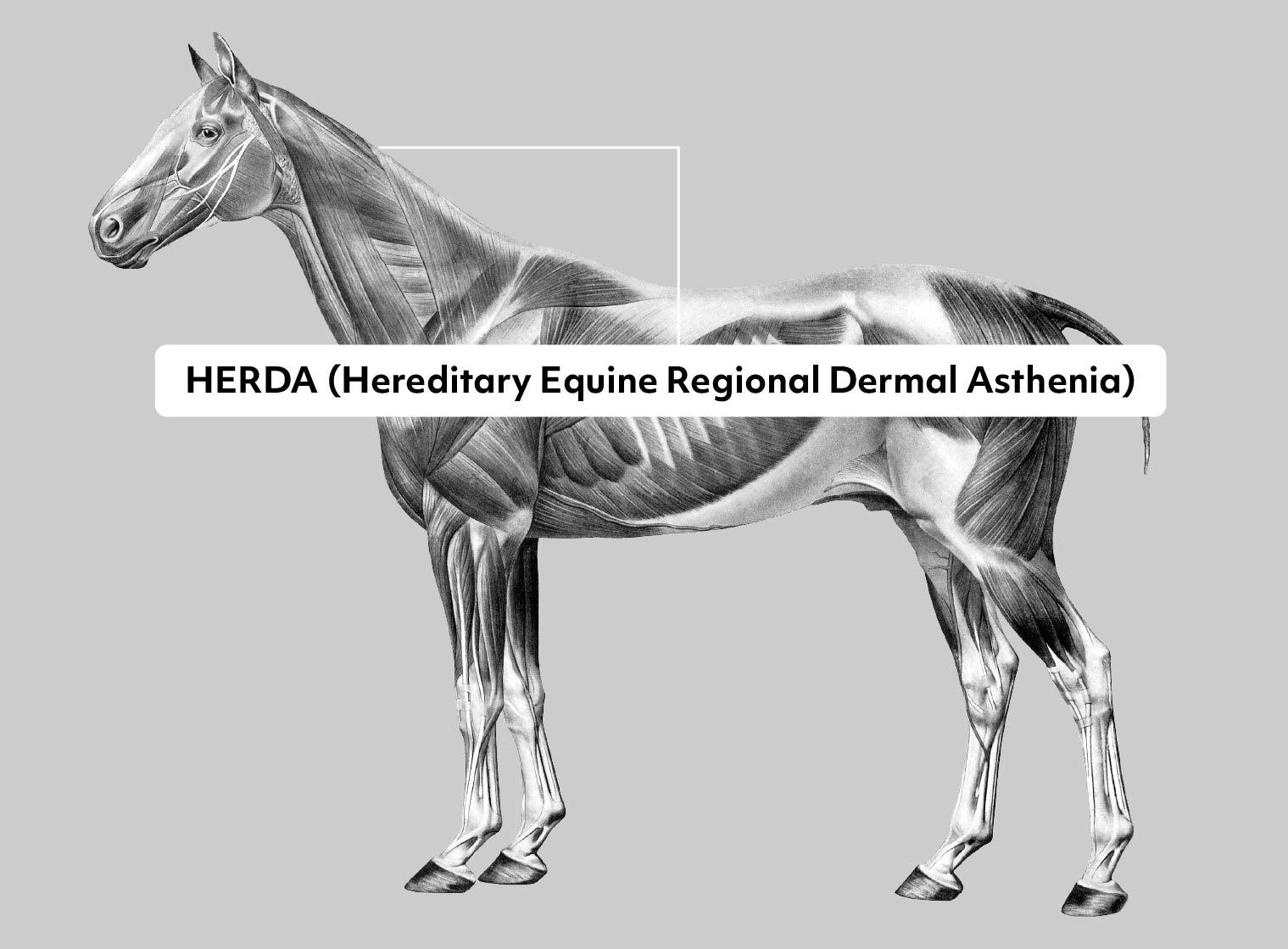Hereditary Equine Regional Dermal Asthenia (HERDA)
Gene or Region: PPIB
Reference Variant: G
Mutant Variant: A
Affected Breeds: Quarter Horse
Research Confidence: High - Findings reproduced in multiple studies
Explanation of Results: herda/herda = homozygous for Hereditary Equine Regional Dermal Asthenia, trait expressed, may result in severe/fatal health issues herda/n = heterozygous for Hereditary Equine Regional Dermal Asthenia, carrier n/n = no variant detected
General Description for Hereditary Equine Regional Dermal Asthenia (HERDA)
Hereditary Equine Regional Dermal Asthenia (HERDA) is a degenerative skin disease that primarily affects the American Quarter Horse breed. Loose skin is often an early indication of the disease, and severe seromas, hematomas, ulcerations usually develop around 1.5 years of age and progressively worsen. There is no cure, and the majority of affected animals have to be euthanized within 2-4 years.
A missense mutation in the equine cyclophilin B (PPIB) was determined to cause a functional defect in this protein, resulting in less effective catalysis of the rate-limiting step in collagen folding. Etalon offers diagnostic testing to determine carrier or affected status.
This disease follows an autosomal recessive mode of inheritance, so in order for the foal to be affected, both the sire and the dam must carry the allele. This also means that horses can appear normal but be carriers for the condition. If two carrier horses mate, there is a 25% chance that the foal will have HERDA. Studies estimate that ~3.5% of Quarter Horses are carriers. It's recommended that both carriers and clinically affected horses with HERDA be removed from breeding programs.
References
Tryon et al., “Homozygosity mapping approach identifies a missense mutation in equine cyclophilin B (PPIB) associated with HERDA in the American Quarter Horse.” (2007) Genomics 90: 93-102. PMID: 17498917
Ishikawa Y, Vranka JA, Boudko SP, Pokidysheva E, Mizuno K, Zientek K, Keene DR, Rashmir-Raven AM, Nagata K, Winand NJ, Bächinger HP. Mutation in cyclophilin B that causes hyperelastosis cutis in American Quarter Horse does not affect peptidylprolyl cis-trans isomerase activity but shows altered cyclophilin B-protein interactions and affects collagen folding. J Biol Chem. 2012 Jun 22;287(26):22253-65. doi: 10.1074/jbc.M111.333336. Epub 2012 May 3. PMID: 22556420; PMCID: PMC3381186.
More Horse Health
Occipitoatlantoaxial Malformation 1
Occipitoatlantoaxial Malformation 1 (OAAM1) is an inherited developmental condition predominantly found in Arabian horses, characterized by abnormal development of the cervical vertebrae leading to compression of the upper cervical cord and subsequent neurological damage.
Polysaccharide Storage Myopathy
Polysaccharide Storage Myopathy (PSSM) is a glycogen storage disorder in which affected horses have chronic episodes of exertional rhabdomyolysis (“tying-up”). Acute symptoms are an unwillingness to move and muscle damage following exercise. Moderate symptoms can usually be managed through a low-sugar/starch diet and exercise.
Recurrent Laryngeal Neuropathy
Recurrent Laryngeal Neuropathy (RLN) is a disease that results in loss of the neurons that open the larynx, significantly affecting performance in Thoroughbreds and other sport horses. It is an important issue for horses in competitive events because the resultant paralysis of the larynx leads to obstruction of air flow during intense exercise, creating the abnormal inspiratory noise that gives RLN its common name: “roaring”.
